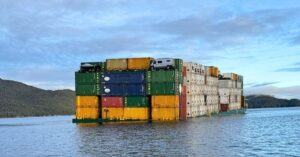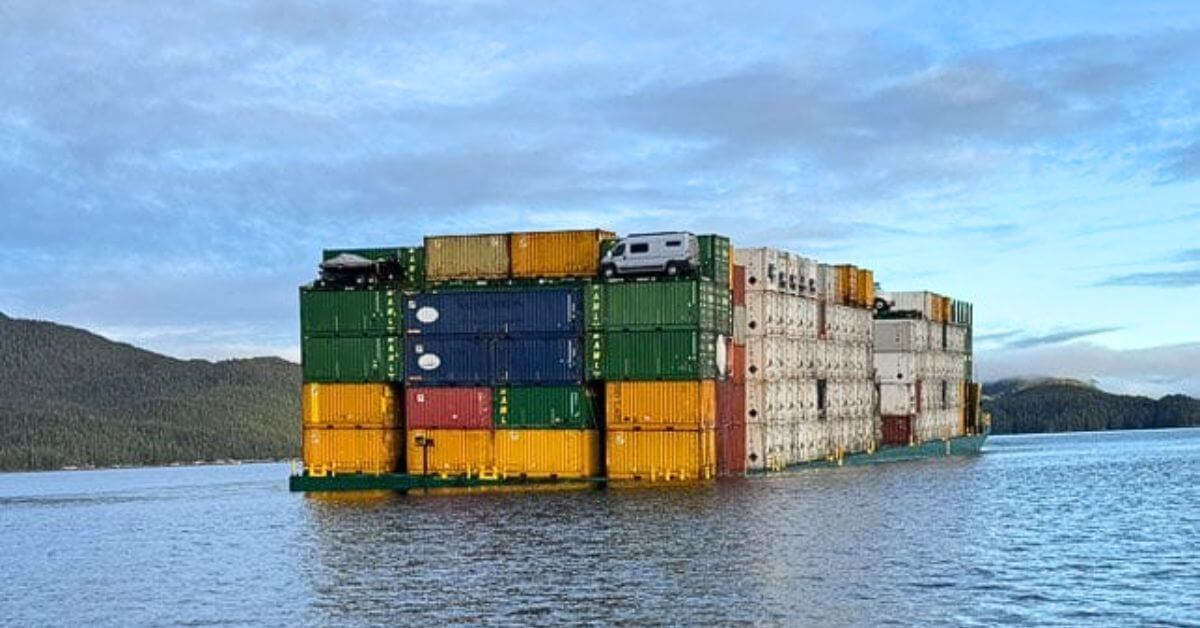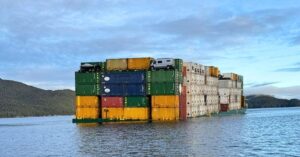
SS United States Gets Final Resting Place As World’s Largest Artificial Reef Off Florida
November 20, 2025
Russia’s Novatek Selling Sanctioned LNG At 30-40% Discounts To Attract Chinese Buyers
November 20, 2025

A U.S. cargo barge travelling from Alaska to Seattle was moved into a sheltered harbour near Bella Bella, British Columbia, after it began taking on water earlier this week, prompting a coordinated response from Canadian authorities and the Heiltsuk Nation. Officials confirmed the barge remains stable, with no reports of pollution.
The problem was reported on Monday afternoon by the U.S. tug Malolo, owned by Dunlap Towing, which was towing the barge south through Fisher Channel, around 480 kilometres northwest of Vancouver.
The Canadian Coast Guard said the barge began taking on water during its transit and the incident was logged at approximately 10:15 a.m. Tuesday.
The Heiltsuk Nation’s marine response team and the Coast Guard monitored the situation as the vessel was moved behind Matthew Island to protect it from forecasted winds.
Divers later inspected the barge and confirmed damage to the stern and a significant hole in the bottom of the hull.
William Housty, director of the Heiltsuk Integrated Resource Management Department, told Canadian media that the barge appeared to have struck ground, based on the condition of the hull. He said responders were working quickly due to expected winds within 24 to 36 hours, adding that the barge’s earlier position had been exposed.
The contents of the barge were initially unclear. Transport Canada later confirmed that it was loaded with refrigerated containers, dry goods, and diesel used to power the refrigerated units. Officials reiterated that there were no signs of pollution or environmental harm linked to the damage.
Housty said Alaska Marine Lines, the barge operator, had not initially disclosed the cargo details to the Heiltsuk Nation, which increased early concern. As a precaution, the Heiltsuk response team deployed containment booms around three nearby salmon creeks and other sensitive cultural and ecological areas.
The Coast Guard said the barge had remained stable on Tuesday and was not continuing to sink. An oil boom was placed around the vessel as a precautionary measure, despite the absence of leaks.
Alaska Marine Lines said another barge is en route to assist, with plans to lighten the load before the two barges continue to Seattle. The company said that the vessel was southbound and not carrying groceries or essential supplies for Southeast Alaska, meaning no supply chain disruption is expected.
Photos of the barge show several hundred containers and a number of vehicles and boats loaded on deck. Alaska Marine Lines typically operates barges around 400 feet long, with capacities of up to 17,000 tonnes.
The Heiltsuk Nation said the incident highlights long-standing concerns about rising marine traffic and accidents in the region. Housty added that such incidents, including barges running aground, have become more frequent over the past decade.
The community also recalled the 2016 sinking of the tug Nathan E. Stewart, which spilled over 107,000 litres of fuel into sensitive waters. The operator was later fined more than $2.9 million.
Housty also said that a lack of transparency about the cargo carried by U.S. tugs and barges in Canadian waters makes emergency responses more difficult.
The barge incident comes as Ottawa considers changes to the northern B.C. tanker ban, which limits tankers carrying more than 12,500 metric tonnes of crude or persistent oil products. The federal government is assessing potential exemptions in connection with pipeline development in Alberta.
The Heiltsuk Nation said in a statement that any tanker ban with exceptions “is not a ban,” adding that this week’s incident underlines their concerns about allowing more tanker and cargo traffic in coastal waters.
References: Cbc, ctvnews
Source: Maritime Shipping News


